Five lost Belgian beer styles that you still can drink regardless
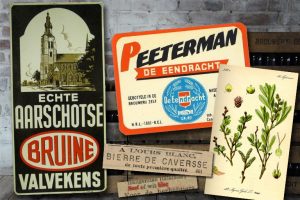 Belgium is the open air museum of beer. Nowhere else so many wonderful old beer types and production methods have been preserved. Yet, Belgium has its share of lost beers. Fallen out of favour, lost from the nation’s book of recipes. Luckily, once in a while such a ‘lost beer’ is brought back to life. Which is nice, because historic beer is at its best when you can drink it. Here are five beers that (in a few cases, very locally) you can taste again. And if you want to have a go at brewing authentic beers yourself, check out my historic recipes…
Belgium is the open air museum of beer. Nowhere else so many wonderful old beer types and production methods have been preserved. Yet, Belgium has its share of lost beers. Fallen out of favour, lost from the nation’s book of recipes. Luckily, once in a while such a ‘lost beer’ is brought back to life. Which is nice, because historic beer is at its best when you can drink it. Here are five beers that (in a few cases, very locally) you can taste again. And if you want to have a go at brewing authentic beers yourself, check out my historic recipes…
Seef
 Pronounced ‘safe’, this was the common people’s drink in 19th century Antwerp. They even named an entire neighbourhood after it: the Seefhoek. Somewhere after the First World War it disappeared off the market and the recipe was lost. Many years later Johan van Dyck, then marketing director at Duvel Moortgat, became fascinated by this once famous beer and undertook a three years’ search to retrieve its recipe, its yeast strain and its secret ingredient. And he succeeded: in 2012 this historical white beer, containing wheat, oats and buckwheat, came back to the market.
Pronounced ‘safe’, this was the common people’s drink in 19th century Antwerp. They even named an entire neighbourhood after it: the Seefhoek. Somewhere after the First World War it disappeared off the market and the recipe was lost. Many years later Johan van Dyck, then marketing director at Duvel Moortgat, became fascinated by this once famous beer and undertook a three years’ search to retrieve its recipe, its yeast strain and its secret ingredient. And he succeeded: in 2012 this historical white beer, containing wheat, oats and buckwheat, came back to the market.
-> seef.be
Caves
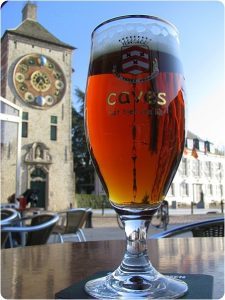 This was the beer of Lier, a town south-east of Antwerp. A light-coloured wheat beer with oats, that used to be exported out of town in large quantities, as far as the provinces of Flanders and Holland. In 1721 the city of Gent even asked the people of Lier to provide their beer with a certificate, because much inferior foreign beer came to the city ‘labelled as beers of Lier’. A kind of ‘appellation contrôlée’ for beer! During the 19th century it disappeared from the market, but in 1976 the ‘Heren van Lier’ guild dug up a recipe and since then, they have it brewed by Verhaeghe in Vichte. Contrary to the export beer of old, this new Caves may only be drunk in Lier itself.
This was the beer of Lier, a town south-east of Antwerp. A light-coloured wheat beer with oats, that used to be exported out of town in large quantities, as far as the provinces of Flanders and Holland. In 1721 the city of Gent even asked the people of Lier to provide their beer with a certificate, because much inferior foreign beer came to the city ‘labelled as beers of Lier’. A kind of ‘appellation contrôlée’ for beer! During the 19th century it disappeared from the market, but in 1976 the ‘Heren van Lier’ guild dug up a recipe and since then, they have it brewed by Verhaeghe in Vichte. Contrary to the export beer of old, this new Caves may only be drunk in Lier itself.
-> visitlier.be
Peeterman
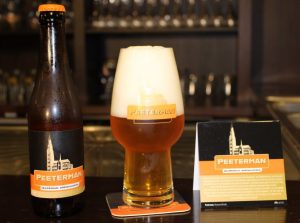 The brewing city of Leuven was once famous for its two beers: white beer and peeterman. The latter was named after the nickname for the people of Leuven, who were called ‘peetermannen’ after the Saint Peter’s church. The beer of the same name was a strong version of the simple white beer, slightly darker. It was made out of wind malt, wheat and oats and was known for its cloudiness and its sour taste. The story goes that that’s why drinkers would add lumps of sugar to it to make it drinkable. When wind malt (not kilned, just dried by the wind and therefore very light in colour) fell out of use, this spelled the end of peeterman, and its last brewer ceased production in 1974. After a few previous attempts to bring this legendary beer back to life, in 2019 Leuven businessman Patrick Vanoppen revived the old Breda beer brand. And made peeterman part of its product range.
The brewing city of Leuven was once famous for its two beers: white beer and peeterman. The latter was named after the nickname for the people of Leuven, who were called ‘peetermannen’ after the Saint Peter’s church. The beer of the same name was a strong version of the simple white beer, slightly darker. It was made out of wind malt, wheat and oats and was known for its cloudiness and its sour taste. The story goes that that’s why drinkers would add lumps of sugar to it to make it drinkable. When wind malt (not kilned, just dried by the wind and therefore very light in colour) fell out of use, this spelled the end of peeterman, and its last brewer ceased production in 1974. After a few previous attempts to bring this legendary beer back to life, in 2019 Leuven businessman Patrick Vanoppen revived the old Breda beer brand. And made peeterman part of its product range.
Aarschotse Bruine
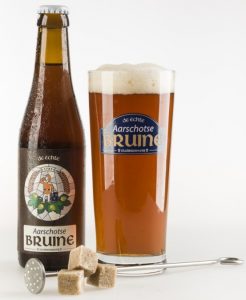 This aged brown beer from the Brabant town of Aarschot is said to started life in the 19th century. In particular the Tielemans brewery was known for it, until it was sold to Haacht in 1970 and then closed. In 2012 the Aarschotse Stadsbrouwerij (City Brewery) started producing this wonderful sweet-sour beer again. In the cellar of the former monastery of the Grey Sisters of Saint Francis, the Aarschotse Bruine is now ageing in its casks, so the city can sing its old drinking song again: ”Daar is geen fijner bierke dan bruine, ha ha!’ (There is no nicer beer than the brown one, ha ha!’)
This aged brown beer from the Brabant town of Aarschot is said to started life in the 19th century. In particular the Tielemans brewery was known for it, until it was sold to Haacht in 1970 and then closed. In 2012 the Aarschotse Stadsbrouwerij (City Brewery) started producing this wonderful sweet-sour beer again. In the cellar of the former monastery of the Grey Sisters of Saint Francis, the Aarschotse Bruine is now ageing in its casks, so the city can sing its old drinking song again: ”Daar is geen fijner bierke dan bruine, ha ha!’ (There is no nicer beer than the brown one, ha ha!’)
-> hetgasthuis.be/stadsbrouwerij
Gruut
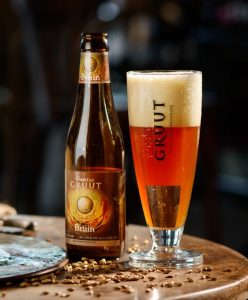 In the Middle Ages, gruut or gruit was the most widespread flavouring agent for beer. As brewers were not yet aware of the many advantages of hops, they added this mix of herbs and spices. Its exact ingredients were a well-kept secret, and it was sold at artificially high prices by government agents. After the introduction of hops to brewing in the 14th century, gruit beer didn’t last long. In 2009 Annick de Splenter, herself originating from a family of brewers, started her own brewery in Gent, and for her beers she took her inspiration from this Medieval spiced beer. By now, Gruut is available in five versions. I’m told her herb mix is not entirely identical to what was used in the past, but that doesn’t make it any less tasty.
In the Middle Ages, gruut or gruit was the most widespread flavouring agent for beer. As brewers were not yet aware of the many advantages of hops, they added this mix of herbs and spices. Its exact ingredients were a well-kept secret, and it was sold at artificially high prices by government agents. After the introduction of hops to brewing in the 14th century, gruit beer didn’t last long. In 2009 Annick de Splenter, herself originating from a family of brewers, started her own brewery in Gent, and for her beers she took her inspiration from this Medieval spiced beer. By now, Gruut is available in five versions. I’m told her herb mix is not entirely identical to what was used in the past, but that doesn’t make it any less tasty.
-> gruut.be






“And if you want to have a go at brewing authentic beers yourself, check out my historic recipes…”
Roel, waar kunnen we deze vinden?
Do you have recipes of any of these beers that you could share?